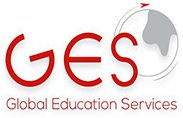“Creating an Effective Learning Environment: Strategies for Student Success”
Effective learning environments are critical for the success of students in the classroom. Observations of these environments can provide valuable insights into what is working well and what areas need improvement. In this essay, we will discuss the importance of applying effective learning environment observation tools in classrooms.
First, observation tools allow teachers to assess the overall climate of their classrooms. They can provide information on the levels of student engagement, interaction, and motivation. By observing these factors, teachers can make necessary adjustments to their teaching methods and create a more positive and productive learning environment. For example, if a teacher observes that students are not engaging in class discussions, they may adjust their teaching style to incorporate more group activities and interactive lessons.
Second, observation tools can help teachers identify areas of concern and potential challenges in their classrooms. For example, they may observe that students are struggling with a particular concept or that they are not completing their homework. With this information, teachers can then take steps to address these challenges and provide support for their students.
Finally, observation tools can provide teachers with valuable feedback on their teaching methods and practices. They can see what works well and what areas need improvement, and make changes accordingly. This can lead to more effective teaching and better learning outcomes for students. For example, a teacher who observes that students are not paying attention during lectures may adjust their teaching methods to incorporate more interactive activities or visual aids.
In conclusion, applying effective learning environment observation tools in classrooms is crucial for creating positive and productive learning environments. These tools provide teachers with valuable information on the overall climate of their classrooms, identify areas of concern, and provide feedback on their teaching methods. By using these tools, teachers can make necessary adjustments to their teaching practices and improve the learning outcomes for their students.

